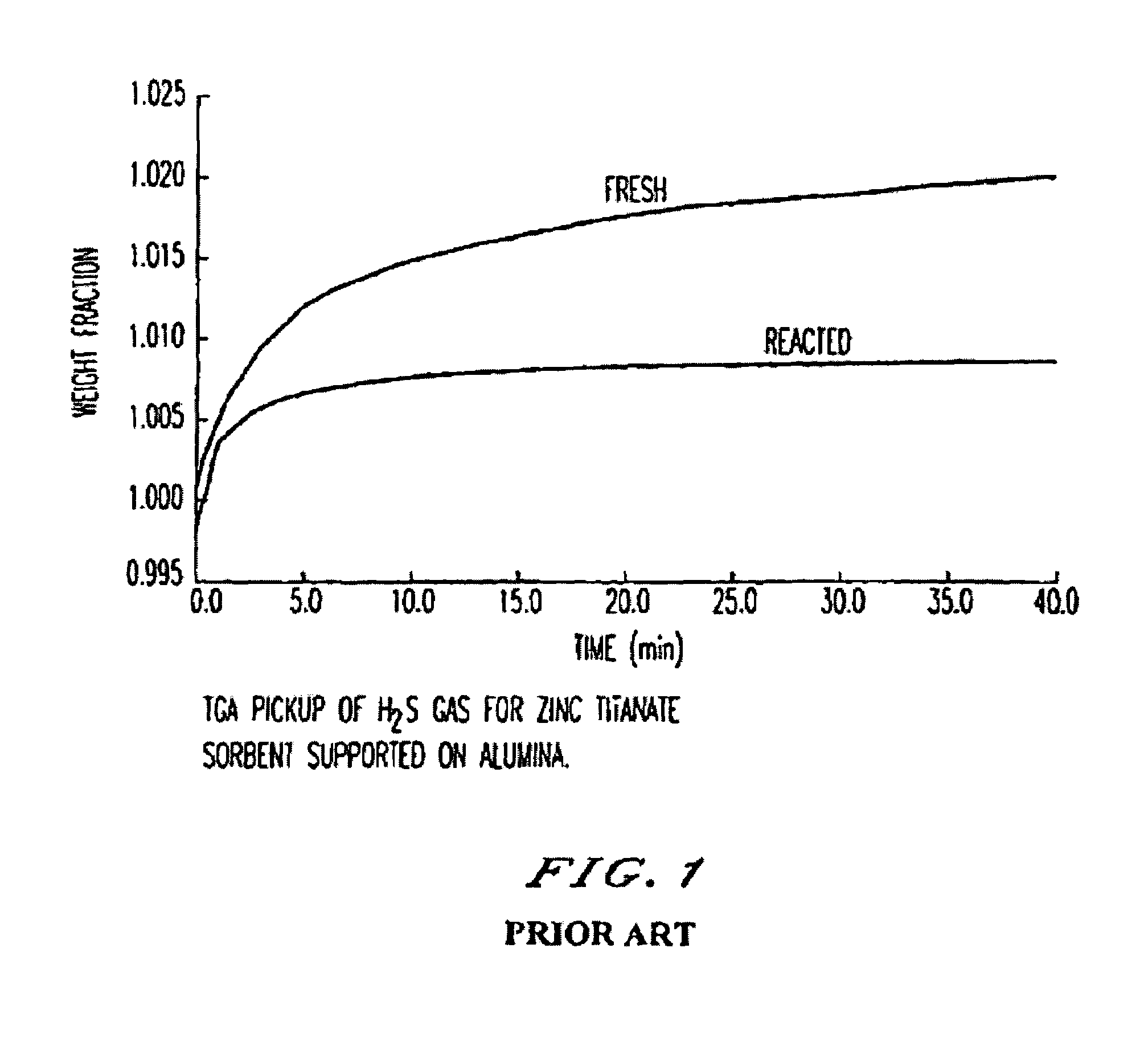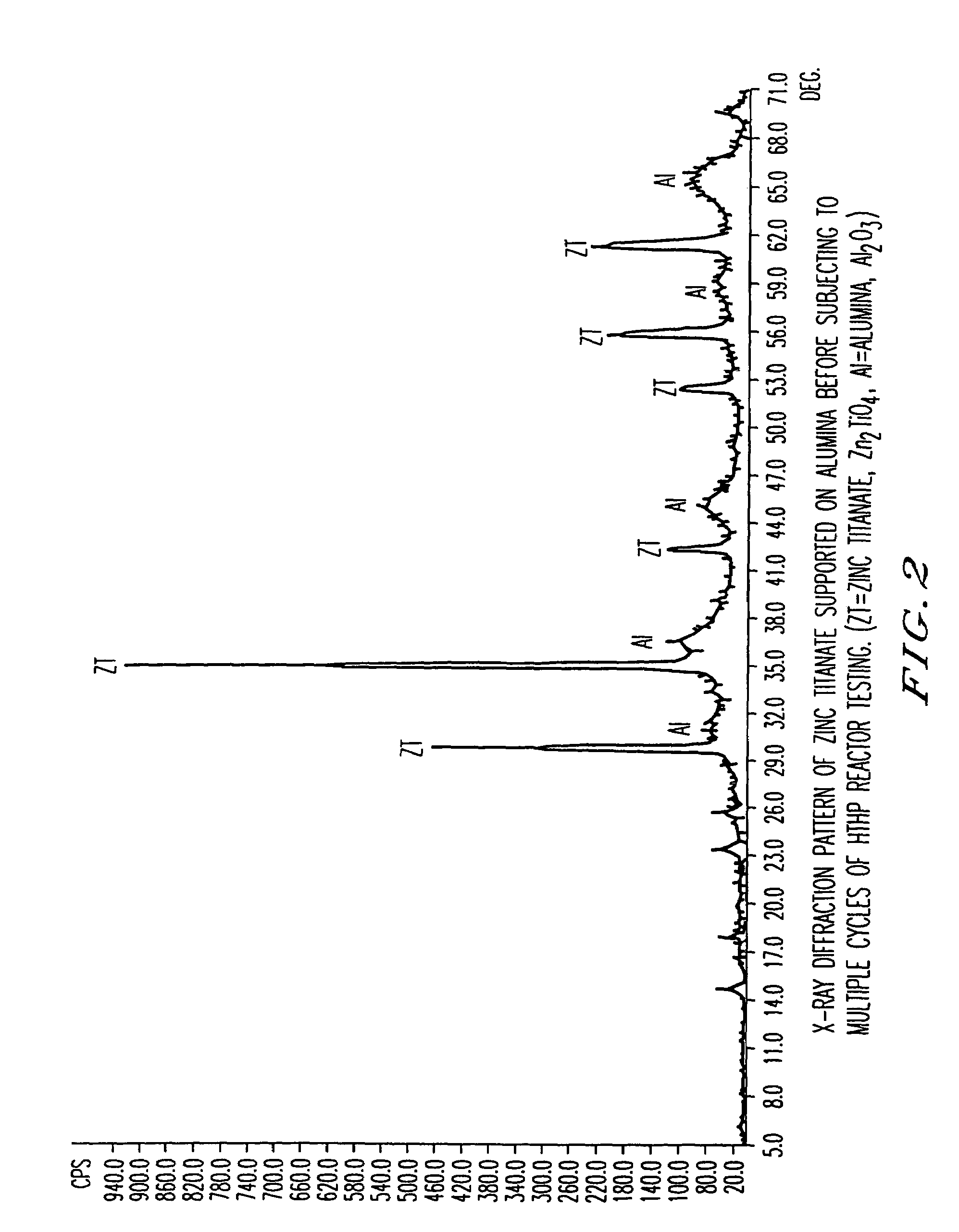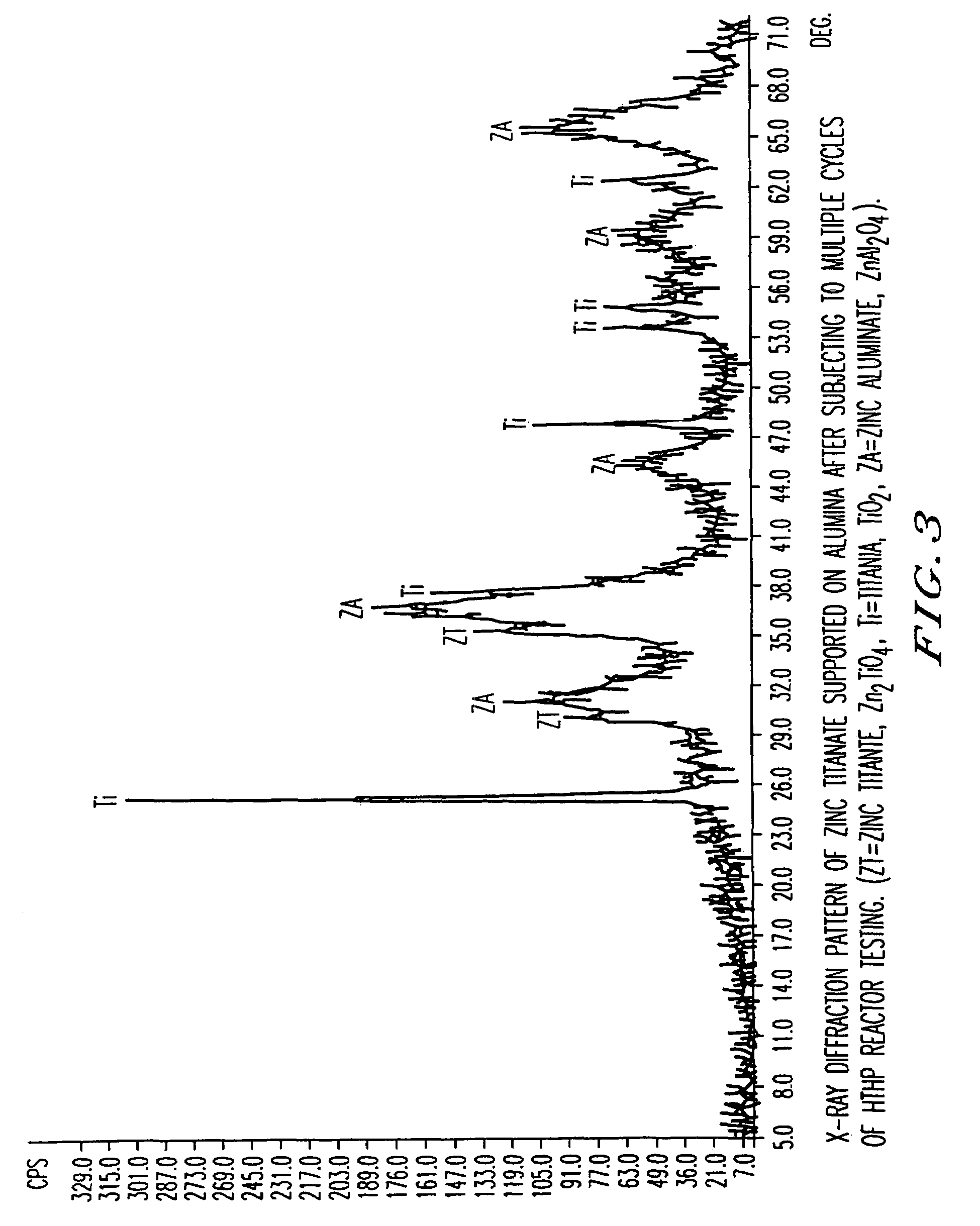Attrition resistant, zinc titanate-containing, reduced sulfur sorbents and methods of use thereof
a technology of zinc titanate and sulfur sorbent, which is applied in the direction of hydrogen sulfide, separation process, other chemical processes, etc., can solve the problems of corrosive toward steel turbine blades, pressure drop through process reactor units, and elutriation of particulate matter,
- Summary
- Abstract
- Description
- Claims
- Application Information
AI Technical Summary
Benefits of technology
Problems solved by technology
Method used
Image
Examples
example 1
[0078]A zinc titanate compound containing no binder material was produced by mixing 2637 grams of water, 548 grams of zinc oxide (Zinc Corporation of America, Grade: KADOX® 911) and 359 grams of titanium oxide (Dupont, Grade: TI-PURE® R-900) in a container under strong shear conditions. The resulting slurry was spray dried to form microspheroidal particles. The resulting particles were then heat treated at 900° C. for two hours. X-ray diffraction analysis confirmed zinc titanate was the only phase present in such particles.
example 2
[0079]A zinc titanate compound containing 3 weight percent bentonite binder was produced by mixing 2637 grams of water, 532 grams of zinc oxide (Zinc Corporation of America, Grade: KADOX® 911), 348 grams of titanium oxide (Dupont, Grade: TI-PURE® R900) and 27.2 grams of Bentonite in a container under strong shear conditions. The resulting slurry was spray dried to form microspheroidal particles. The resulting particles were then heat treated at 900° C. for two hours. X-ray diffraction analysis confirmed zinc titanate was formed in such particles.
example 3
[0080]A zinc titanate-containing composition containing alumina as the binder was made by first preparing a zinc titanate compound as in Example 1. This zinc titanate was then reduced to an average particle size of about 2.5 micrometers. In a separate container, a 12% solids slurry of hydratable alumina (CONDEA PLURAL SB®) was prepared by slurrying 499 grams of alumina in 1895 grams of water under high shear conditions. To this slurry, 25 grams of formic acid were added and agitated unit alumina became gelled. The gelled alumina was then combined with the zinc titanate and water such that the amount of zinc titanate contained in the finished product was 30 weight percent. The slurry was then spray dried at 13% solids to form microspheroidal particles that were then heat treated at 700° C. for one hour.
PUM
| Property | Measurement | Unit |
|---|---|---|
| temperatures | aaaaa | aaaaa |
| temperature | aaaaa | aaaaa |
| temperatures | aaaaa | aaaaa |
Abstract
Description
Claims
Application Information
 Login to View More
Login to View More - R&D
- Intellectual Property
- Life Sciences
- Materials
- Tech Scout
- Unparalleled Data Quality
- Higher Quality Content
- 60% Fewer Hallucinations
Browse by: Latest US Patents, China's latest patents, Technical Efficacy Thesaurus, Application Domain, Technology Topic, Popular Technical Reports.
© 2025 PatSnap. All rights reserved.Legal|Privacy policy|Modern Slavery Act Transparency Statement|Sitemap|About US| Contact US: help@patsnap.com



